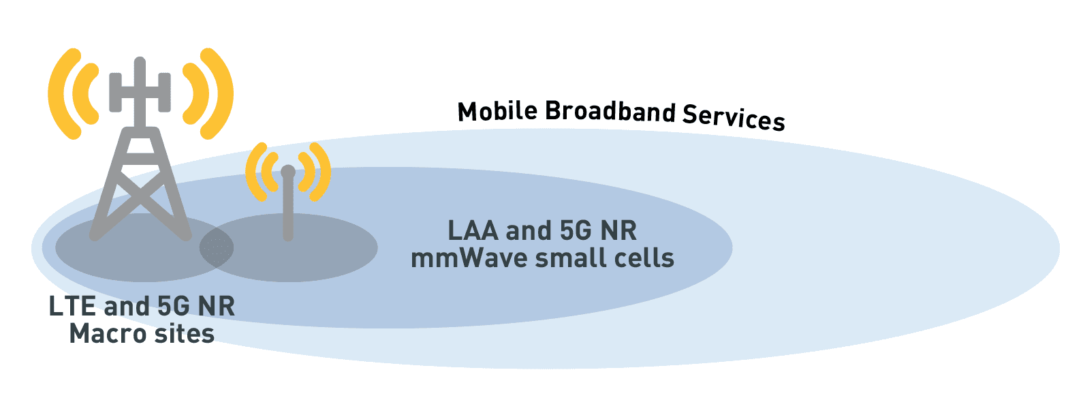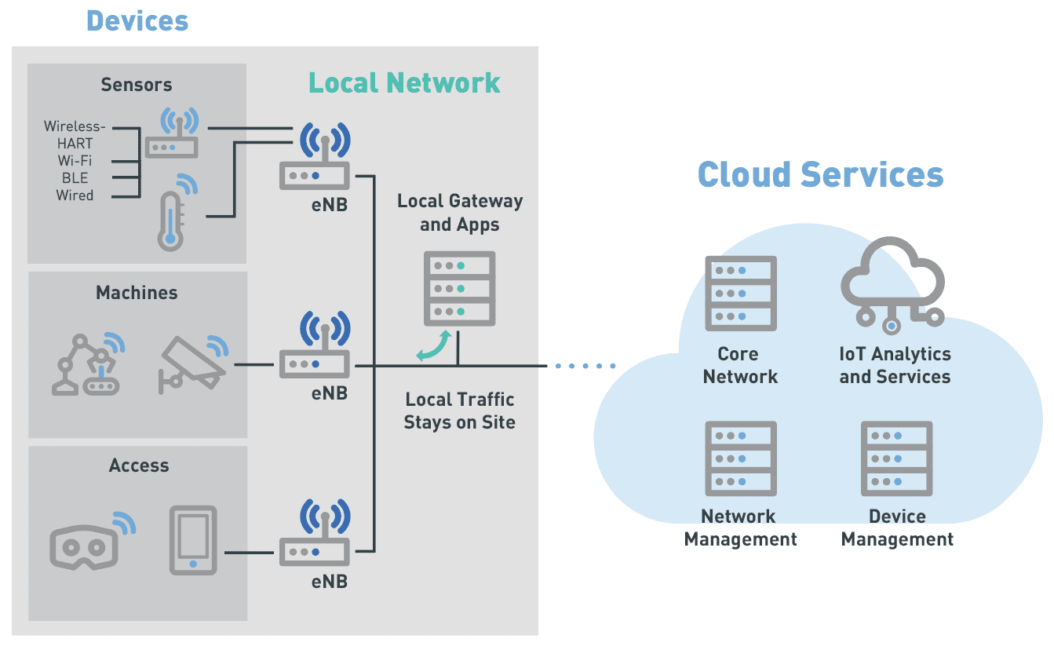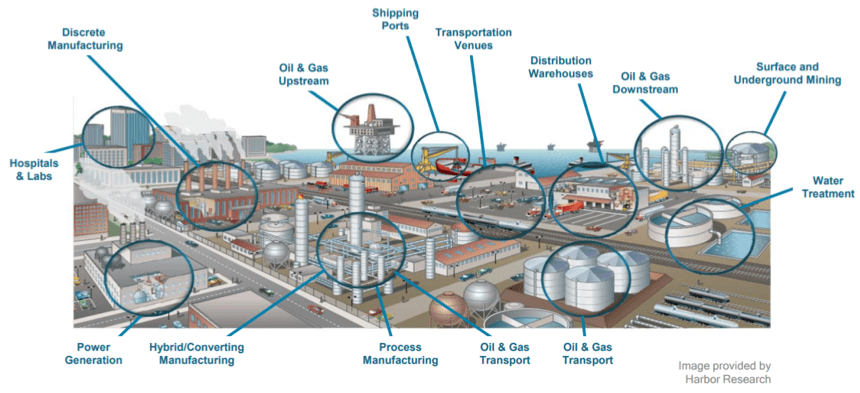
Executive Summary
While most of the industry focus is on deploying new networks based on 5G New Radio (5G NR), the evolution of 4G LTE networks will continue to be a pillar of cellular networks for a long time to come. Due to investments required, cellular operators will be focused on deploying the new 5G NR networks where they are needed most — urban and dense urban parts of the network where capacity needs are highest and cell site concentration is densest. Hence, for the foreseeable future, underlying 4G LTE networks will provide broad-based, ubiquitous, countrywide coverage for the 5G NR devices.
To accomplish that, 4G LTE networks must evolve to approximate the capabilities of 5G NR in terms of speed and capacity to provide a seamless user experience. Realizing this, 3GPP has devised a set of advanced features to continue enhancing the capabilities of 4G LTE as part of Release (Rel) 13 and onwards. This upgrade in capabilities has been called “LTE-Advanced Pro (LTE-A Pro),” which you may also see referred to as 4.5G or Pre-5G.
What Are the Benefits of 4G LTE-A Pro Networks?
LTE-A Pro brings enhancements in multiple dimensions. It introduces Gigabit LTE offering speeds up to 2 Gbps, through an even higher level of carrier aggregation and Licensed-Assisted Access (LAA). It also introduces LTE IoT and enhancements. LTE-A Pro further improves broadcast to many different use cases. It expands the reach of cellular technology to new areas such as Cellular V2X (vehicle to everything), which provides a substantial leap in safe driving and becomes an essential element of autonomous driving.
While most of the industry focus is on deploying new networks based on 5G New Radio (5G NR), the evolution of 4G LTE networks will continue to be a pillar of cellular networks for a long time to come.
Additionally, LTE-A Pro brings a new paradigm of private networks in which large industrial enterprises or operations like airports, refineries and seaports can own and operate their independent cellular networks, untethered to public mobile operators. Many of these features are introduced in 3GPP Rel 13 and are further advanced in Rel 14, 15 and beyond. The enhancements in Rel 15 make LTE-A Pro meet the ITU’s (International Telecom Union) IMT-2020 requirements, which entitles it to 5G designation. Many of the new techniques making up 5G NR will be tried and tested as part of LTE-A Pro and further enhanced in 5G NR.
LTE-A Pro deployments are already in operation in many markets, primarily based on Rel 13 specifications. According to the industry body Global Suppliers Association (www.gsacom.com), as of July 2019, 187 operators were investing in one or more LTE-A Pro technologies. Additionally, as of May 2019, 148 operators were investing in Narrowband IoT (NB-IoT), and 62 operators were investing in enhanced machine-type communication (eMTC, a.k.a., LTE-M). There is a vast ecosystem building up for LTE-A Pro, NB-IoT and LTE IoT with many OEMs, integrators, service providers and network operators around the globe.
Considering the critical role of LTE-A Pro, the industry needs to continue to invest in this evolution. The expertise of LTE-A Pro will be vital to the success and the leadership in 5G.
LTE-A Pro vs. LTE: What’s Different?
LTE-A Pro is the marketing name for a set of releases that cellular standards body 3GPP (3rd Generation Partnership Project) publishes. Let’s take a closer look at the cellular technology roadmap established by 3GPP and how LTE-A Pro and 5G fit into it.
Strong LTE Roadmap
3GPP has been developing specifications for cellular technology, as the name suggests from the 3G days itself. It is an accoladed, established process for developing a robust roadmap governing global cellular networks. 3GPP publishes its specifications in the form of releases. These releases are published regularly. A new release is published when a set of essential new features are developed and finalized. Often a set of such releases is given a marketing name. As shown in Figure 1, Rel 8, 9 is called LTE; Rel 10, 11, 12, LTE-Advanced; and Rel 13 and beyond, LTE-A Pro.

While 3GPP publishes specifications, the responsibility of designating any technology as a specific generation or “G” rests with the International Telecom Union (ITU), an arm of the United Nations. For each generation (2G, 3G, 4G, 5G, etc.), ITU establishes the set of requirements they must meet. Technologies and standards that meet those requirements are then eligible to be called by their “G” number. For example, the criteria for 4G, called IMT-Advanced, were met by 3GPP Rel 10 specifications and were therefore designated as 4G. Networks and devices supporting Rel 10 or beyond get the 4G moniker. 5G requirements, called IMT-2020, are met by 3GPP Rel 15 specifications, so networks and devices supporting Rel 15 or beyond will get the 5G moniker.
Parallel Evolution of LTE-A Pro and 5G NR
As Figure 2 illustrates, 5G NR and LTE-A Pro are evolving in parallel. Rel 15 introduces 5G NR, a new unified radio interface that significantly improves the performance, efficiency and scalability of cellular networks. 5G NR brings a set of innovative features, including:
- Massive MIMO that utilizes many antennas
- Beamforming and tracking that enables millimeter-wave bands for cellular mobile operation
- Scalable OFDM and flexible frame structure to adapt the wireless link to diverse needs and different kinds of spectrum
- Advanced channel coding that enables efficient use of wider bandwidths
LTE-A Pro in Rel 15 further improves performance and expands the reach of cellular and mobile technology to many new areas and industries above and beyond improving traditional mobile broadband services. These include cellular V2X, digital broadcast TV services, public safety, private networks and others. Many 5G NR enhancements, such as IoT and V2X, are introduced in LTE-A Pro and further improved and perfected in 5G NR. These enhancements will be forward and backward compatible.

Both 5G NR and LTE-A Pro, as defined in Rel 15, will meet ITU’s IMT-2020 requirements and are therefore candidates for the 5G moniker.
The bottom line is that both 5G NR and LTE-A Pro are evolving in parallel and will be considered as 5G. The focus of this white paper is to explore the evolution of LTE-A Pro.
Critical Components of LTE-A Pro
LTE-A Pro brings two sets of enhancements. The first set improves the performance in terms of user speeds and capacity over previous generations. The second set, more importantly, expands the reach of cellular technology to many new industries to enable new types of services applications. Although the list of features is quite exhaustive, here are some of the most impactful ones:
Gigabit LTE
Providing peak speeds up to 2 Gbps, utilizing both licensed and unlicensed spectrum bands.
LTE IoT
Ability to connect and manage many IoT devices with years-long battery life, extended coverage and varying low data speeds.
Private LTE
Bringing secure, high-performance cellular technology to private and local networks that are custom built and managed by large enterprises for specific uses.
Cellular V2X
Connecting vehicles to other vehicles, infrastructure and everything else around them to improve safety and enable better autonomous driving.
Terrestrial Broadcast
Using existing (and new) mobile networks to efficiently provide public broadcast services (e.g., terrestrial live TV).
Strong Traction for LTE-A Pro
LTE-A Pro has seen keen interest from the mobile operator community. Among all the components mentioned in the previous chapter, Gigabit LTE and LTE IoT have already become mainstream; private LTE and cellular V2X (C-V2X) networks have garnered significant support from the industry; broadcast has seen some interest in some countries, but more work still needs to be done.
With more than 20 years of knowledge and experience in cellular technology, Telit’s collaboration with industry players is essential to lend the perspective of a global OEM that develops, markets and supports the industry’s most advanced portfolio of data cards supporting LTE-A Pro. They have a robust line of high-speed industrial-grade standards-based modules that scale to the diverse IoT needs of enterprises, whether it is mobile computing, networking or industrial IoT. You can find more details about the latest Telit IoT products here.
Gigabit LTE Foundation Is Essential for the Seamless 5G Experience
Gigabit LTE, breaking the peak speed mark of 1 Gbps, was a major milestone in the evolution of cellular broadband technologies. The first services offering Gigabit LTE were introduced back in early 2017 and have grown significantly both in geographical spread and rise in peak speeds. Gigabit LTE has become a basic feature in today’s premium tier smartphones and will soon be trickling down to lower tiers. The latest LTE-A Pro networks and devices support peak speeds up to 2 Gbps.
Gigabit LTE also brings significant benefits to both operators and users. For operators, it boosts capacity, which allows them to offer data services in a more cost-efficient way, enabling unlimited data plans. For users, higher peak speeds improved average speeds, higher network capacity improved speeds even in crowded conditions, and better coverage improved speeds even in bad coverage areas.
Gigabit LTE improves user experience with an instant download of large files, unfettered HD and 4K video streaming, instant access to content in the cloud as if it were on the device itself, new applications such as VR, AR and much more.
LTE-A Pro utilizes several enhancements such as carrier aggregation utilizing both a licensed and unlicensed spectrum, MIMO, higher-order modulation and others to achieve gigabit speeds. Figure 3 illustrates how these features work together to deliver speed and performance.

Carrier aggregation: LTE-A Pro supports aggregation of up to seven carriers, including spectrum from the 5 GHz unlicensed bands. Obviously, the higher the number of carriers, the higher the speed.
MIMO: Up to 4 x 4 MIMO is supported on licensed bands and up to 2 x 2 on unlicensed bands. MIMO enables higher speeds and improves coverage, which in turn improves user speeds in bad coverage areas.
Each MIMO and carrier pair is sometimes referred to as a layer or stream. Twenty such layers or streams are needed to achieve 2 Gbps peak speed. That means five carriers or more with 4 x 4 MIMO on each of them or any such combination.
Higher-order modulation: Support for up to 256-QAM and beyond. Higher-order modulation improves speeds, especially when the device is in a good coverage area.
According to GSA, as of July 2019, 306 operators had deployed or launched LTE-A or LTE-A Pro technologies in their commercial networks, and 187 operators were investing in one or more of these features. Further, GSA noted that by the end of Feb 2019, 101 operators in 60 countries or territories had deployed/launched in one or more of these features to enable Gigabit LTE, as shown in Figure 4.

Strong Traction for LTE-A Pro
Up to five or more carriers are needed to achieve gigabit speeds. Mobile operators, particularly in the U.S., do not have access to that amount (100 MHz) of the licensed spectrum in all their local markets. LAA is the solution the 3GPP standardized for them to offer Gigabit LTE service. LAA was specified in Rel 13 and has seen rapid adoption in both networks and devices.
Since unlicensed carriers only support 2 x 2 MIMO, aggregation of more carriers would come in handy to make use of more unlicensed bands for achieving gigabit speeds.
Seamless User Experience Outside Focused 5G Coverage Areas
The hallmark of 5G in early deployments is its extremely high data speeds. However, 5G deployment will be initially be focused on metropolitan and dense urban parts of the network. This means that when users move out of 5G coverage boundaries, they are seamlessly handed off to the underlying LTE network. Underlying LTE networks must offer similar speeds to provide a consistent and seamless user experience. That’s exactly when the gigabit speeds of the LTE-A Pro come into the picture. So, users don’t experience degradation of speed or service when moving between the 5G NR and LTE-A Pro networks, as shown in Figure 5. 5G NR and LTE-A Pro are set to support seamless handoff from day one.

LTE networks will also be the voice solution for 5G. Voice over LTE (VoLTE), which has become mainstream, will carry voice call traffic for 5G devices. So, users will be able to enjoy simultaneous 5G data and VoLTE voice calls. Gigabit LTE is the foundation for 5G NR broadband.
LTE IoT Will Evolve to 5G Massive IoT
LTE IoT has seen very strong market traction. According to GSA, by May 2019, 55 countries had launched either an NB-IoT network or an eMTC network, and 23 of those countries had both, as shown in Figure 6. Further, 148 operators were investing in NB-IoT in 71 countries, 98 deployed or launched NB-IoT networks in 53 countries, and 62 operators were investing in eMTC networks in 36 countries, with 37 operators having deployed or launched LTE-M networks in 25 countries.
It is essential for companies that want to be leaders in the IoT industry to either start or continue investing in LTE IoT, as it will be central to success in 5G IoT. Forgoing or investing late will place them behind competitors already using LTE IoT and moving their IoT applications into 5G.

To learn more about LTE IoT, refer to our white paper “Building 5G IoT on the Solid Foundation of LTE IoT.”
Private LTE Networks Provide a Scalable Platform for Diverse Enterprise and Industrial IoT Needs
Private LTE is introduced in LTE but enhanced and perfected in 5G NR.
What Are Private LTE Networks, and What Are Their Benefits?
Private LTE networks combine secure, scalable and efficient cellular technology and the easy deployment model of Wi-Fi. They are custom-built networks managed by private enterprises for their unique use cases.
Private LTE networks use licensed, unlicensed or shared spectrum and are built with small cells. Citizens Band Radio Service (CBRS) is a shared spectrum and an excellent private LTE option in the United States. In advanced business models, mobile network operators (MNOs) lease a portion of their unused licensed spectrum to private enterprises to build these networks.
Private LTE offers scalability, allowing enterprises to build out only what they need when and where they need it. These networks are highly optimizable for the use case they enable. Since they are confined to buildings, campuses or complexes, private LTE networks are easier to manage in comparison to public networks.
The most important benefits of private LTE are security and privacy. Enterprises can store and manage all the network data locally and make it ultra-secure instead of on a distant server elsewhere. Figure 7 illustrates how LTE-A Pro offers scalable architecture to keep local traffic on site.

Wide Range of Use Cases for Private Networks
Use cases for private LTE include enterprises in need of secure, reliable, high-performance local networks, such as industrial complexes, manufacturing facilities using robots, control systems, large warehouses with many surveillance cameras, mines, ships and remote campuses. Figure 8 shows a comprehensive list of use cases.

Pathway to 5G Private Networks and Industry 4.0
With its massive IoT and mission-critical services, 5G is creating vast market opportunities for industrial IoT and the herald of Industry 4.0. 5G must meet extremely diverse industry requirements to enable large-scale transformation, which is nigh impossible with one homogenous network. Private LTE is the only cost-effective option to address disparate industry needs.
A Significant Market Opportunity for the Entire Industry
Private LTE networks are massive and lucrative opportunities for all industry players. Though the numbers vary due to research methodology and premises, the market size is estimated to be between $4.5 billion in 2023 to $11 billion in 2024. Industrial IoT accounts for a vast portion of this growth, with strong interest from global conglomerates and automotive industries. 5G is increasing interest further.
CBRS spectrum is an early example that could be used for private networks. CBRS has completed its critical trial phases successfully and is on track for commercialization in 2020. Led by the OnGo Alliance (formerly known as the CBRS Alliance), it has seen strong support from the industry. Telit is an active member of the alliance and is planning support of the band across many products.
Private LTE Networks Provide a Scalable Platform for Diverse Enterprise and Industrial IoT Needs
Introduced in Rel 14, C-V2X is one of the most exciting new areas of LTE-A Pro. C-V2X provides a robust, low-latency and high-reliability communication channel between the vehicle and its surroundings. C-V2X covers four specific cases:
- V2V: Vehicle-to-vehicle for the communication between two vehicles. For example, used by collision avoidance and safety systems.
- V2I: Vehicle-to-infrastructure for communication between vehicle and infrastructure such as traffic lights, Roadside Units (RSU), etc. For example, used to understand traffic light conditions, priority, etc.
- V2P: Vehicle-to-pedestrian for communication between vehicles and people, bicycles, animals, etc. For example, to provide safety alerts to pedestrians and bicyclists, etc.
- V2N: Vehicle-to-network for communication between vehicle and cloud services. For example, to provide routing, traffic management, etc.
The first three of these cases are network independent, meaning the devices communicate directly with each other without involving the cellular network. The last one is network-dependent, meaning the cellular network facilitates communication.
C-V2X is Forward Compatible with 5G NR
C-V2X is one of the several features that is introduced in LTE-A Pro and further enhanced and perfected in 5G NR. As shown in Figure 9, the focus of C-V2X in Rel 14 is automotive safety, whereas the focus of 5G NR, specifically in Rel 16, is autonomous driving. Being complementary, all investments that industry is making today in Rel 14 based C-V2X is protected in the future and used even when upgraded to Rel 16.

5G NR C-V2X provides a set of innovative features that makes autonomous driving more robust, reliable and safe. It offers extremely high-precision location data, extremely low latency and high-throughput connectivity to make better use of onboard and cloud-based intelligence. For the autonomous vehicle, C-V2X’s ability to offer non-line-of-site sensing, conveying intent and situational awareness, which are beyond the capability of traditional onboard cameras and sensors, is extremely important.
As autonomous driving fast approaches commercialization at the same time as safety concerns loom, C-V2X becomes critically important to ensure the success of the self-driving car.
Investment in LTE-A Pro, Key for Leadership in 5G
It is very apparent from the discussion that LTE provides a solid foundation for 5G. While 5G deployments are ongoing, they will rely on underlying LTE networks to provide ubiquitous coverage and seamless user experience, when users move out of 5G coverage areas. Therefore, it is extremely important to invest in LTE-A Pro to continue improving user experience. Many of the enhancements in LTE-A Pro, including LTE IoT, C-V2X and private networks, are forward compatible and evolve into 5G. The implication here is that all investments the industry is making today and in the near future on LTE-A Pro are protected and poised to provide considerable returns. Also, LTE-A Pro, with its enhancements, will meet the criteria to be categorized as 5G.
However, if ecosystem participants don’t invest in LTE-A Pro, they may risk falling behind and contribute to degrading the user experience. For example, if operators fail to upgrade their networks, the phenomenally high speeds and excellent user experience of their 5G users will be limited to very small coverage areas and substantially inferior experience outside those areas. Considering that it will take a long time to expand 5G coverage on a countrywide basis, operators will likely face customer angst and even lose them to competitors. If infrastructure or device vendors show apathy toward LTE-A Pro, they might lose the opportunity to lead and fall behind in technology development. If 5G network and devices are not backward compatible, operators and OEMs might lose market to competitors supporting backward compatibility. Not investing in LTE-A Pro for the market leaders means giving away leadership positions to their competition, and for others, it results in a missed opportunity to compete and win against market leaders.
If history has taught us anything, it is companies that invest early get the lead in technology to become market leaders. Investing in LTE-A Pro means investing in 5G and the future.


